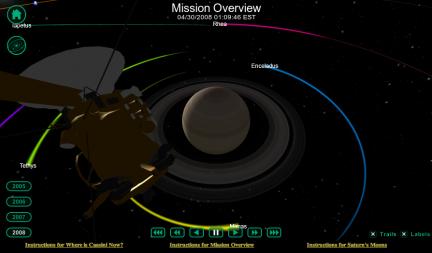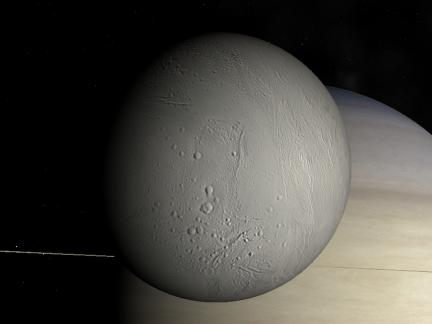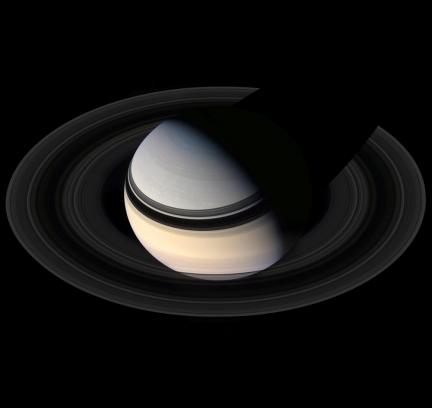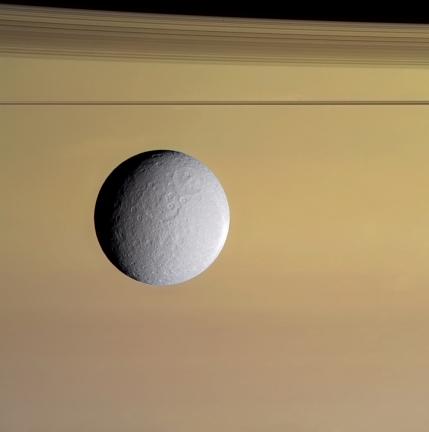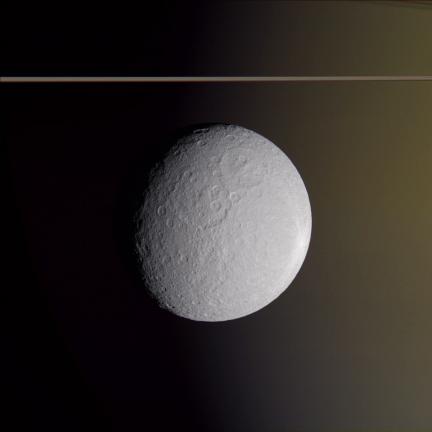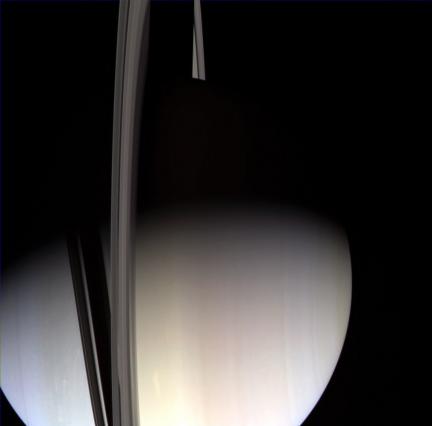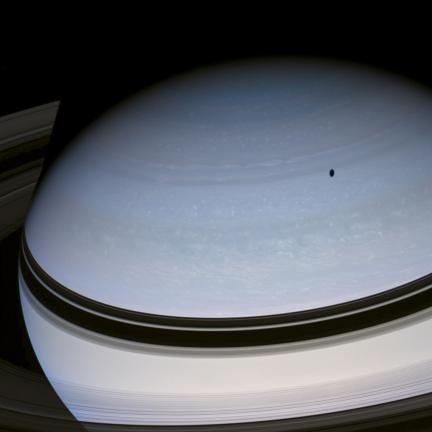 Saturn looking like the bigger blue marble in the Solar System. One theory for the blueness of Saturn’s northern polar region during the age of Cassini versus the age of Voyager is due to atmospheric changes in the Saturnian winter. Some also theorize that the shadows of the rings drop the temperature even lower which might explain why the blueness is only found in the north.
Saturn looking like the bigger blue marble in the Solar System. One theory for the blueness of Saturn’s northern polar region during the age of Cassini versus the age of Voyager is due to atmospheric changes in the Saturnian winter. Some also theorize that the shadows of the rings drop the temperature even lower which might explain why the blueness is only found in the north.
Wallpaper: Northern Cloudtops on Saturn
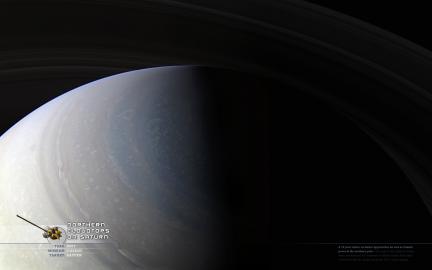 Wallpaper image made from previous post.
Wallpaper image made from previous post.
NOTE: The rings to the right of the terminator were sampled from actual images and rendered out in 3-D software to fill the page. The dark outline of the right side of the globe is artificial. Everything to the left of center is actual image. See previous post for unadulterated version of the image. Color composite and rings are by wanderingspace.net.
15 Year Winter on Saturn is Ending
 The northern region of Saturn is starting to come to light as a 15 year-long winter is slowly making its transition to spring. This means the northern pole of Saturn which has remained in darkness since Cassini’s arrival will eventually be exposed to natural light. Don’t forget that this is the pole that sports the oddly hexagonal structure which we have yet to see in high detailed natural light.
The northern region of Saturn is starting to come to light as a 15 year-long winter is slowly making its transition to spring. This means the northern pole of Saturn which has remained in darkness since Cassini’s arrival will eventually be exposed to natural light. Don’t forget that this is the pole that sports the oddly hexagonal structure which we have yet to see in high detailed natural light.
CASSIE the Online Cassini Simulator
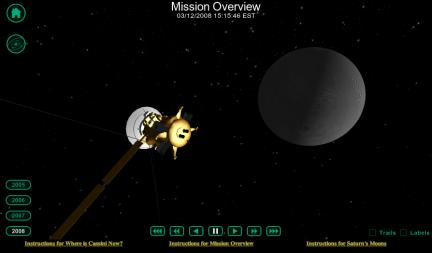 Go over and check out the interactive Cassini simulator at saturn.jpl.nasa.gov. Shown above is the simulator’s view of Cassini’s upcoming Enceladus flyby. Scale at this view is not terribly accurate as when you spin the view around — it will seem as if the spacecraft is the same size as the moon. However, it is pretty cool watching the mission in high speed with the labels and orbit trails turned on as seen below.
Go over and check out the interactive Cassini simulator at saturn.jpl.nasa.gov. Shown above is the simulator’s view of Cassini’s upcoming Enceladus flyby. Scale at this view is not terribly accurate as when you spin the view around — it will seem as if the spacecraft is the same size as the moon. However, it is pretty cool watching the mission in high speed with the labels and orbit trails turned on as seen below.
You will probably have to install a plug-in to use this, but it is quite simple. It should take care of itself for PC users, for MAC users you only need to download the installer and execute the installation from wherever your downloaded files reside. Some platforms may require restarting the browser should the plug-in appear to not be working after installation.
If this isn’t impressive enough for you and you want to go hard-core, try downloading CELESTIA. This is an application based simulator of our galaxy that is supported by a community of users which expand the program’s capabilities by keeping the surface maps of all the planets and moons up to date. There are even mission simulators you can download and ride shotgun along with historic missions such as Voyager and many others. Even more impressive is flying to other star systems where astronomers have discovered exo-planets and discovering that someone has already added a hypothetical model of that new world to the data set. A fair warning is in order — installing this is and then expanding the program through use of the Celestia Motherlode may result in hours worth of unproductive time.
Here is what an Enceladus flyby looks like in Celestia with updated skins. This is an actual screengrab from the application.
Highlights for 2008
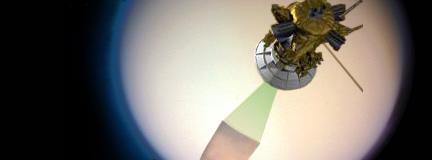 Cassini takes a pass at Titan on February 22 (already having made a pass this year on January 5th).
Cassini takes a pass at Titan on February 22 (already having made a pass this year on January 5th).
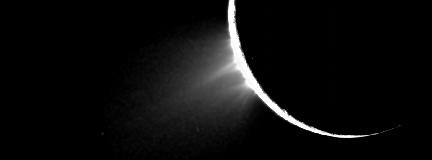
Soon after Titan, Cassini performs a truly unexpected maneuver and flies directly through the plumes of Enceladus on March 12th. This is a somewhat risky task for the probe as the particles it will surely encounter may pose some kind of impact threat to the spacecraft. Mission planners expect the risk to be low as they intend to turn the spacecraft around and let the less delicate side of Cassini bear the brunt of the material and photograph the geysers as it moves away from Enceladus. It should make for some of the most exciting planetary science planned for this year.

Cassini has another go at Titan on March 25.

Yup – you guessed it. Cassini at Titan again on May 12th.
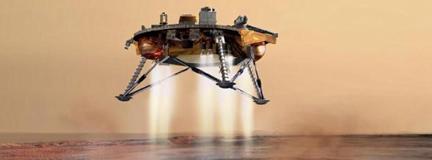
The Phoenix lander arrives at Mars on May 25th and (hopefully) makes good on the failure of the Mars Polar Lander. It will be the first time a probe will attempt a landing on the Martian pole and will conduct a series of experiments looking for the existence of water ice.

You can never have too much of a good thing. Cassini at Titan again on May 28th as well as July 31.
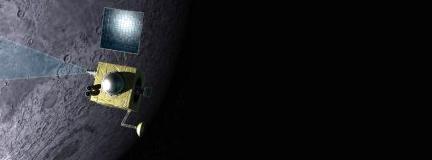
Chandrayaan becomes India’s first planetary probe as it leaves for the moon in Early July (was April).
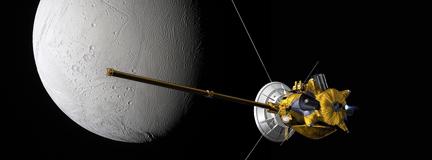
The extended Cassini mission has made Enceladus a prime target of investigation and the new encounters begin on Aug 11th and comes within 54km of the surface.
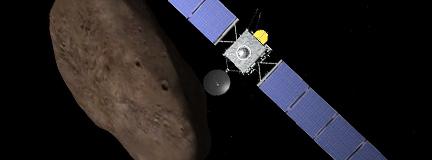
Rosetta still on its way for an encounter with Comet 67P/Churyumov-Gerasimenko in 2014, will make a close pass at an asteroid named 2867 Steins on Sept 5th at a distance of only 1700 km. Steins is a small asteroid measuring only a few kilometers in size and the craft will be traveling at a relatively slow speed which should allow for some good resolution images to be acquired during the encounter.
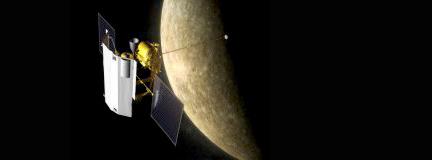
Messenger (having just completed the first encounter in 33 years this past week) has another go at Mercury on Oct 6th and flies past more uncharted territory on its way to eventual orbit insertion in 2011.

Two more close flybys of the Saturnian moon Enceladus on Oct 9 and Oct 31. The first at hair-raising distance of 25km and the second around a more reasonable 200km.
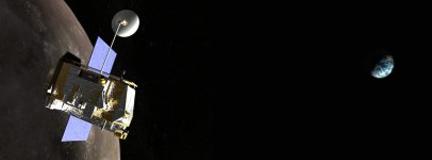
In an effort to recognize the International Lunar Decade (and intended manned Lunar missions within 15 years), the United States returns to the moon with the Lunar Reconnaissance Orbiter on Nov 3rd. It is expected to begin its scientific goals only 3 days after launch and is expected to look for possible deposits of water ice in permanently shadowed craters near the Lunar poles.

And finally more Titan flybys on Nov 3, Nov 19, Dec 5 and Dec 21.
All this is in addition to the ongoing work of Opportunity and Spirit on the surface of Mars. Mars Express and Mars Reconnaissance in orbit around Mars. Cassini’s non-targeted continuing tour of other icy Saturnian moons. And who knows, maybe we will see more than 2 or 3 reports coming from the ever quiet Venus Express mission currently at Venus.
Sadly, some very exciting missions will be quietly traveling en route to their targets and are not expected to be heard from in 08 like the Dawn Mission to the Asteroid Belt, New Horizons mission to Pluto/Charon, the newly re-targeted Deep Impact mission (now known as Epoxi) as well as Stardust now on its way to a follow-up visit to Tempel 1 the comet that was smacked by Deep Impact in 2005.
Saturnati X
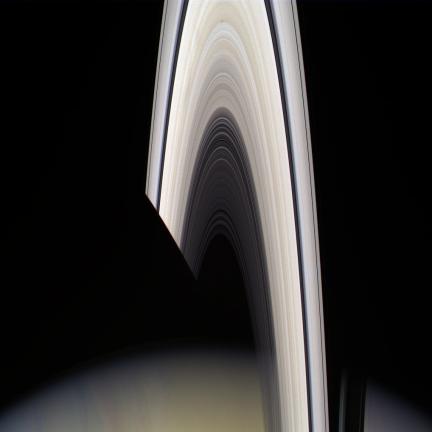 This image taken on January 18, 2008 from 988,018 km,
This image taken on January 18, 2008 from 988,018 km, 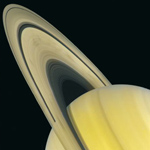 reminds one of some of those vintage Voyager images of Saturn (seen at left) from back in the early and mid 1980’s. Just compare at the incredible differences between the quality and color of the Voyager vs. Cassini images. Saturn images during the Voyager era were all consistently yellow and brown, but today’s Cassini images reveal Saturn to be a rich peach color mixed with hints of yellow and brown. We also have the advantage of being witness to the rich blues currently appearing in the northern hemisphere which did not exist in 1981 or 1986.
reminds one of some of those vintage Voyager images of Saturn (seen at left) from back in the early and mid 1980’s. Just compare at the incredible differences between the quality and color of the Voyager vs. Cassini images. Saturn images during the Voyager era were all consistently yellow and brown, but today’s Cassini images reveal Saturn to be a rich peach color mixed with hints of yellow and brown. We also have the advantage of being witness to the rich blues currently appearing in the northern hemisphere which did not exist in 1981 or 1986.
F-Ring Animation
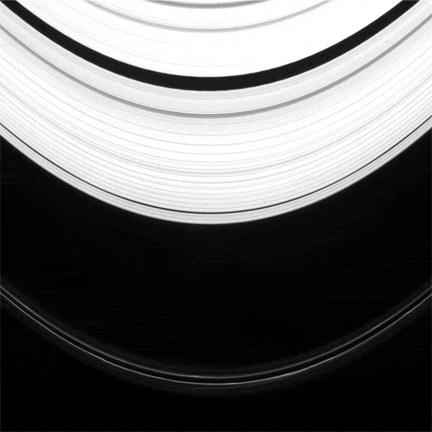 Prometheus disturbing the F-Ring as it passes. We have seen this animated before, but perhaps not from such a vantage point.
Prometheus disturbing the F-Ring as it passes. We have seen this animated before, but perhaps not from such a vantage point.
Improved Epimetheus Image Released
 This improved image of Epimetheus was released to the Cassini site yesterday and as compared to this more raw image post from December 8, it is most notably cleaner, processed in color and appears to be much sharper.
This improved image of Epimetheus was released to the Cassini site yesterday and as compared to this more raw image post from December 8, it is most notably cleaner, processed in color and appears to be much sharper.
This is a view of the moon’s more southern pole and there is speculation that covering a majority of this face is actually one large impact crater which could explain it’s flattened appearance. There also seems to be what looks like a deposit or “dusting” of material all over this face which seems to blanket flat areas and begins to fill some craters and other depressed regions. The moon is only about 70 x 50 km in size, approximately the size of a city such as Los Angeles.
Wallpaper: Southern Saturn
The Gordan Ugarkovic fan club must be thrilled this week with all the recent Saturn images. This new one is among the best around, reminiscent of the fantastic Ian Regan composite. A gorgeous view of Saturn’s southern pole which has seen very little exposure in terms of global views (or near global) like this. The now famous “storm” dead-centered around the pole can be seen directly to the left of the image caption.
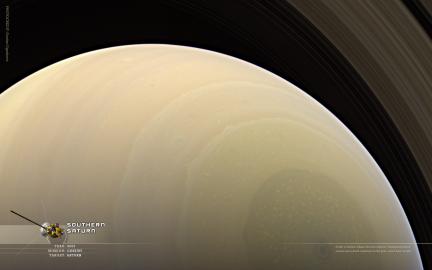
As always, the Ugarkovic flickr page for all the latest.
NOTE: An ever so slight amount of Photoshop image extension was applied to the far right side of the image only at the edge. Probably about .5% of the image.
Saturnati IX
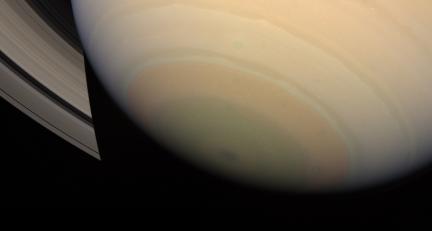 Gordan is having at Saturn again.
Gordan is having at Saturn again.
Saturn’s Southern Pole
And here we have another Ugarkovic gem.

Epimetheus
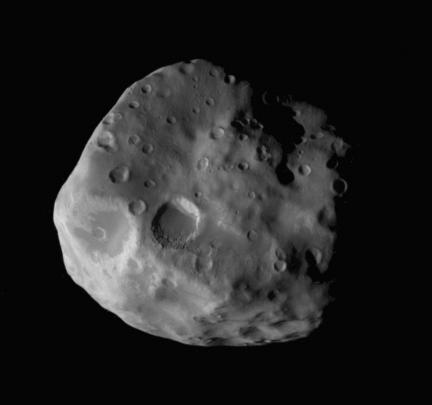 A new look at a minor Saturn moon Epimetheus. Image credit is Ian Regan, the same creator of this super awesome Saturn image.
A new look at a minor Saturn moon Epimetheus. Image credit is Ian Regan, the same creator of this super awesome Saturn image.
The iPhone Set 01: Bodies of Major Interest
 If I am going to keep making these things… I’d be a fool to not include a set for the Apple iPhone. Coincidentally, when you purchase your iPhone and do not yet have a phone service, the phone displays a full-disc image of the Earth pretty much displayed exactly as these do when uploaded to your iPhone. So in the spirit of continuity, you can now opt instead to have Mercury, Venus, Earth, The Moon (Luna), Mars, Jupiter, Io, Europa, Ganymede, Callisto, Saturn, Enceladus, Titan, Iapetus, Hyperion, Uranus, Miranda, Neptune or Triton grace your screen instead of the default Earth.
If I am going to keep making these things… I’d be a fool to not include a set for the Apple iPhone. Coincidentally, when you purchase your iPhone and do not yet have a phone service, the phone displays a full-disc image of the Earth pretty much displayed exactly as these do when uploaded to your iPhone. So in the spirit of continuity, you can now opt instead to have Mercury, Venus, Earth, The Moon (Luna), Mars, Jupiter, Io, Europa, Ganymede, Callisto, Saturn, Enceladus, Titan, Iapetus, Hyperion, Uranus, Miranda, Neptune or Triton grace your screen instead of the default Earth.
The easiest way to install wallpapers to your iPhone is to make a special set in iPhoto and simply drag all the files to that folder. Then in iTunes have your iPhone sync that folder to your photos collection. After that it is as simple as opening the “Photos” area of your iPhone. Go to your new folder of images and open whichever image you want. Then tap on the image just once and assign it as a wallpaper using the “Use as Wallpaper” button in the lower left corner of the screen.
If you have a PC I have no idea in hell how the hell you get images into your iPhone. I would buy a Mac… you have an iPhone and use iTunes… you are half-way there.
For a version of these with no graphics see this link.
The Regan Saturn Portrait Extended Mix
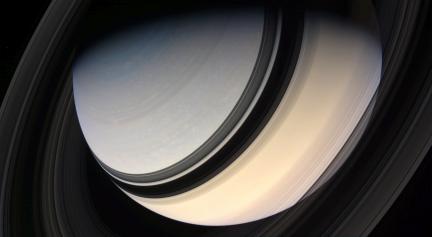 The one Saturn image that we keep coming back to at wanderingspace seems to be the Ian Regan portrait of Saturn. The composition, angle and color captured in the shot somehow seem to be better than any other. While there are a few other full Saturn images now available from the Cassini mission, none seem to have captured the drama that this one does. The angle that the ring shadows fall on Saturn’s disc, the phase that Saturn happened to be in at the time and the color available as the shot was taken from a more northern position. However, trying to apply the image to larger scale resolutions was not possible as the resolution in the orignal would require that the rings be extended to fill the frame on the left, right, bottom and potentially the top as well (I was also curious to see if the image was just as impressive if it was not angled and cropped as it is in the original). Extending the rings in one direction is easy enough, but doing it on all sides is near impossible to try to do in any image editing software such as Photoshop.
The one Saturn image that we keep coming back to at wanderingspace seems to be the Ian Regan portrait of Saturn. The composition, angle and color captured in the shot somehow seem to be better than any other. While there are a few other full Saturn images now available from the Cassini mission, none seem to have captured the drama that this one does. The angle that the ring shadows fall on Saturn’s disc, the phase that Saturn happened to be in at the time and the color available as the shot was taken from a more northern position. However, trying to apply the image to larger scale resolutions was not possible as the resolution in the orignal would require that the rings be extended to fill the frame on the left, right, bottom and potentially the top as well (I was also curious to see if the image was just as impressive if it was not angled and cropped as it is in the original). Extending the rings in one direction is easy enough, but doing it on all sides is near impossible to try to do in any image editing software such as Photoshop.

Instead, a one pixel wide swash of the rings was sampled and turned into vectors using Adobe Illustrator. This further allows Illustrator to stretch and curve the ring information captured without having to worry about resolution or pixel distortion. The row of rings was then applied to a brush pattern and applied and wrapped to a simple circle shape. Now the rings are in full circle and the proportions are adjusted. That full set of rings was then rendered in 3-D software and the correct angle as well as perspective was applied and matched with the original Ian Regan image underneath the render for reference.
After that, all that is left to do is merge the Regan image to the rings (and maintain as much of the original image as possible) and artificially add the disc shadow that would fall upon the rings behind the planet iteself.
To see the image in hi-res use check out the 2560x1600 wallpaper sets for The Planets and Saturn Scenes
Prometheus Desturbs a Ring
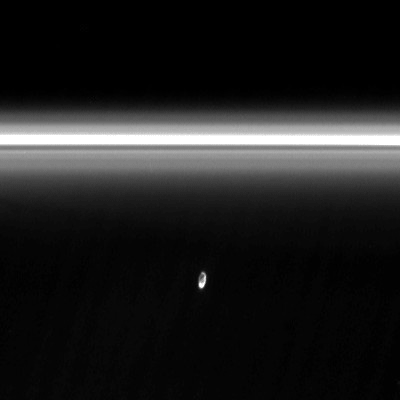 There have been some nice NASA animations of the interaction between some “shepard” moons and the rings, but this has to be the most impressive. There are some blank frames in there for gaps in the data… but the effect is still easy to follow.
There have been some nice NASA animations of the interaction between some “shepard” moons and the rings, but this has to be the most impressive. There are some blank frames in there for gaps in the data… but the effect is still easy to follow.
Wallpaper 2560x1600 Set 03: The Planets
The planets – the complete set for collectors! While there are literally thousands of images of the planets to choose from… full globe high resolution images are actually fairly rare. They usually require many exposures to be stitched together to make one large complete image. This is not only difficult to work out across the great distances of space, but also soaks up a large amount of valuable spacecraft time and energy. This set represents the best available images of each planet in our Solar System.
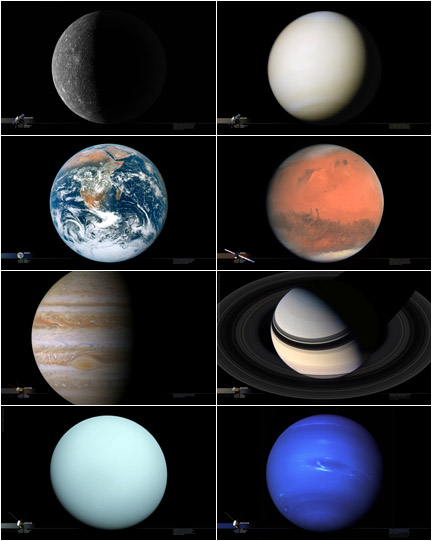
Sorry, no Pluto for more than one reason.
2560 x 1600 Set 05 : Saturn Scenes
Among the various worlds in our celestial neighborhood, Saturn stands apart as a most photogenic. With the help of a complex system of rings it naturally lends itself to more scenic images as compared to the more detail oriented images we see from such other places such as Mars or Jupiter. The “Saturn Scenes” set (downloadable here as a zipped file) was compiled from some of the best scenic images from the Cassini mission that had the potential to fill a 2560x1600 frame.
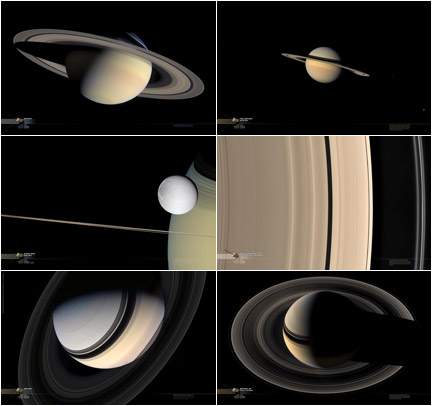
In order to completely fill that frame out some rendering and sampling has been applied to the original images. These additions are briefly noted in the images themselves and are as noted here…
DIONE AND SATURN features the moon Dione passing in front of the edge of Saturn’s disc. The original image would only fill about 1/4 of the frame so some of the details have been sampled and expanded to fill out that full frame’s proportions. The details of the rings are sampled from this image and based upon other photographic references. The left 2/3 of the rings seen here were rendered and are not actual. The lower 1/5 of Saturn’s disc was sampled and extended from the original image. Lastly, the top darkest ring shadows were rendered based upon a fair amount of actual data that was actually present in the original but was cropped short.
SATURN (which is named “SATURN-2.jpg” in the file name) has had a considerable amount of rendering to extend the details of the rings to fill out this larger 2560x1600 frame. The original color composite work was masterfully performed by Ian Regan for unmannedspaceflight.com and has become a wanderingspace favorite. In order to extend the rings to fill out the frame as accurately as possible, a one pixel wide sampling of the full set of rings was captured and digitally translated to vectors. These vectors were then stretched and applied to a circle path which was then rendered in 3-D software to achieve the correct perspective of the original. Once a match was made, the new vector based rings were then blended into the actual original image and some masking was applied to represent Saturn’s shadow falling upon the rings. Despite the heavily rendered nature of the rings, virtually no part of the disc of Saturn itself has been altered and is 99.5% original and actual.
All other images are actual and unaltered.
Cassini Team Shows Some Color
NASA released an unusually large amount of color images to the Cassini website recently. Most of what is shown here on this site are actually images put together by freelance imagers who access the raw files and do some stitching together of filtered images. Color images coming straight off the Cassini website are a rare event, so when about 8 appeared in the gallery a few days ago… it was an unexpected gift.
 Saturn as seen from the unlit side of the rings.
Saturn as seen from the unlit side of the rings.
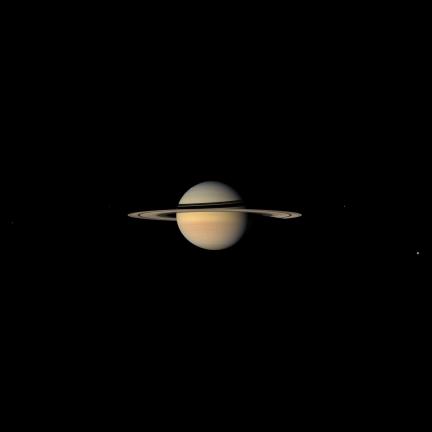 A family portrait of the Saturn System. Moons visible in this image (you need to click the preview) are Dione at far left, Enceladus near the left side ring edge, Mimas a speck on ring shadows on the western limb, Rhea against the northern hemisphere, Tethys near the right ring edge, and Titan near lower right.
A family portrait of the Saturn System. Moons visible in this image (you need to click the preview) are Dione at far left, Enceladus near the left side ring edge, Mimas a speck on ring shadows on the western limb, Rhea against the northern hemisphere, Tethys near the right ring edge, and Titan near lower right.
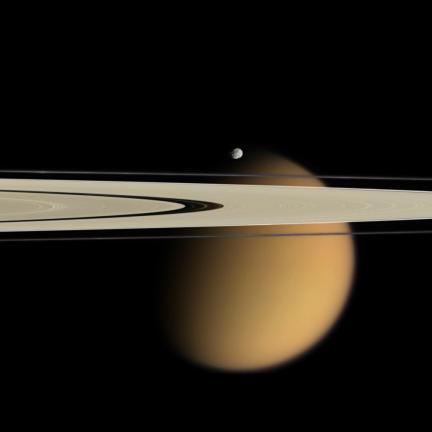 Titan and a small moonlet named Epimetheus share the frame with Saturn’s rings.
Titan and a small moonlet named Epimetheus share the frame with Saturn’s rings.
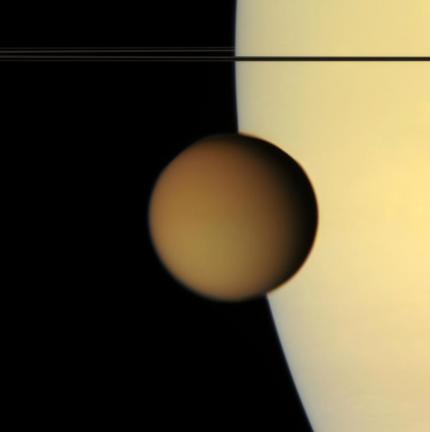 A rare color view of both Saturn and Titan in one frame. This is the only one of its kind thus far in the mission.
A rare color view of both Saturn and Titan in one frame. This is the only one of its kind thus far in the mission.
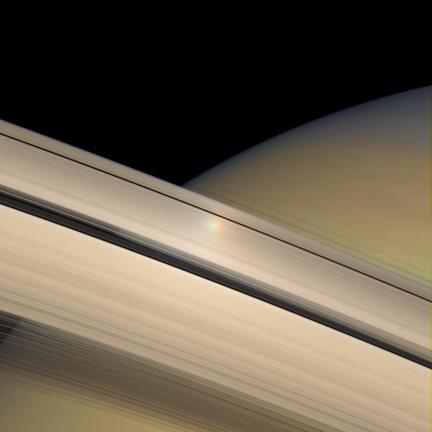 A small rainbow appears as sunlight streams through Saturn’s rings.
A small rainbow appears as sunlight streams through Saturn’s rings.
Rhea Transits Saturn
These images were taken of Rhea as it (and Cassini) sped across Saturn’s globe on August 30, 2007. The near-natural color images were composed from raw near-infrared, green and ultraviolet filtered files made available on the NASA-Cassini website. Some of the details may have been enhanced through the use of infrared and ultraviolet in place of red and blue… but they have been adjusted to reflect what we assume is closer to actual natural color.
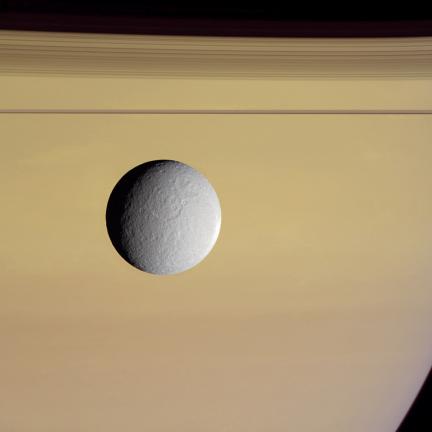 From approximately 93,823 km.
From approximately 93,823 km.
